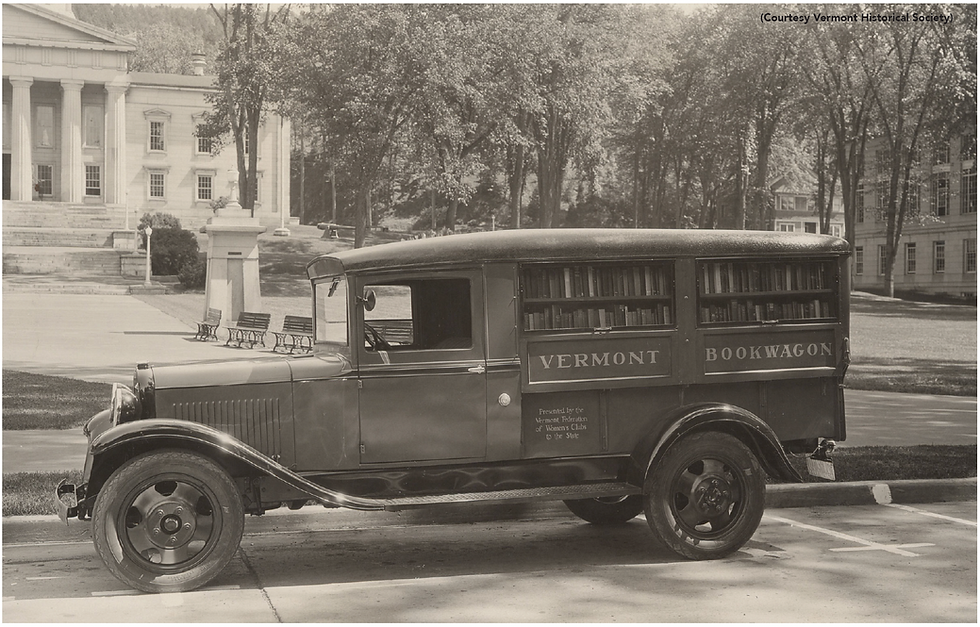MISSING: Lea Ehrich
- VTMAG

- Jul 11, 2019
- 4 min read
In the mid-20th century, Arlington, Vermont was home to a remarkable creative colony:
Five celebrated Saturday Evening Post Illustrators (Norman Rockwell, Mead Schaeffer, George Hughes, Gene Pelham, and John Atherton); Best-selling Author and Social Activist Dorothy Canfield Fisher; Cartoonist Don Trachte; and Composer Carl Ruggles. One town over (seven minutes South) lived poet Robert Frost. Publisher Robert Haas (of Random House) split his time between NYC and Arlington. Just a decade or two earlier, Rockwell Kent called Arlington home.
10 of the 11 names on the list are men. There is a 12th name missing.

Lea Ehrich's work was on display for the first time in 20 years at Old Mill Road Gallery in Arlington, Vermont.
Like so many women of the mid-20th Century, Lea Ehrich was much more complex than she was allowed to demonstrate publicly. Despite being a member of the Southern Vermont Arts Center for 52 years (1945-1997), best friends with Kacy Hughes (George Hughes’ wife), and a respected fine artist (particularly adept at capturing the nuances of nature), Lea has not been recognized as part of the famed Arlington Artists’ Colony – until now. In July 2019, Old Mill Road Gallery in East Arlington, Vermont opens shining a spotlight on Lea Ehrich. The exhibition / pop-up gallery features rotating Ehrich art the first solo show of the artist’s work in over 20 years. An artist of tremendous discipline, Lea painted every day. She was known for painting multiple versions of the same landscape variations on a theme in her attempt to accurately capture the beauty of Vermont. Like her illustrator neighbors, she was an excellent storyteller – primarily through nature – but also evidenced in her figurative work. Among the gallery’s work, there is a wonderful watercolor of a little girl standing in front of a tree, looking at her shadow combined with the trees on the sidewalk. The child’s outstretched arms blend with the tree's branches. Had the sketch been fully realized, it could very well have been accepted as a Saturday Evening Post or New Yorker cover. It is charming and whimsical; a captured moment.
More often than not, however, Lea’s paintings of humans feature a woman in isolation.
To view this full story with all featured photos, visit our online magazine. Jump directly to this story from the table of contents on page 3.
Early Life
Born Lois Weaver on August 12, 1912, Lea’s father was an engineer and architect. Her mother was a housewife and loved to sing opera, although not professionally. She had an older sister, a younger brother, and a younger sister, named Nan. According to a cover profile in Scribner’s Magazine, June 1937, which featured architectural draftsman Lois Weaver, “by age seventeen, [she] was designing wrought iron lights and hardware and supervising the blacksmiths that followed her plans in the making of them. At twenty, she was capable of directing construction work on houses, and at twenty-four, in association with her father, [she had] designed complete houses, from cellar to attic.” The article continues: “She thoroughly understands building and labor costs and how to deal with workmen ... Outside business hours, Miss Weaver finds her principal pleasure in painting. After that come tennis, riding, cooking, [and] making her own clothes.”
She married an attorney, Manfred William Ehrich Jr. (aka “Fred”), when she was in her late 20’s. According to daughter-in-law, Elizabeth, beautiful courtship letters between Fred and Lea document that theirs was a genuine romance.
War Time
Fred graduated law school in 1940 and went on active duty (before the war started). Their first son was born in June 1941. Lea gave birth to twins (one boy/one girl) in September 1942 while Fred was already stationed in the Aleutian Islands. He was there for the next three years, leaving Lea a single mother to care for three children during World War II.
Fred’s Aunt Elsie lived in Shaftsbury, Vermont. While her husband Fred was serving overseas, Lea moved from Green- wich Village, NY, to nearby Arlington. Nan and her son, Andy, joined Lea in Vermont.
Tragically, Nan was killed when her car was hit by a train, leaving Lea to not only raise her own three children, but also her nephew, Andy, who was orphaned by the accident.
Lone Woman
“She loved that house because she went in there, and she kind of re-designed it. And it harkened back to her days of working with her dad, where she could design her own house,” Perez says. Lea focused on her art – and her work was sold at the Southern Vermont Arts Center and at Stratton. She was represented by various galleries in NYC. For the last 20 years of her life, she lived with architect Hank.van Loon. She built a separate studio on their land, where she painted constantly —with three easels going all the time. She died in 1997. Perhaps Elizabeth summarized Lea best, “I think that she liked living her life, trying to discover things. She was imaginative, for sure. She was not your average person. She always came up with something unique.”
By Joshua Sherman M.D
Photos/Art courtesy of Perez Ehrich
Subscribe to VERMONT Magazine to get the very best of 'people, places, things to do' in Vermont delivered to your home 4x a year.
Start your subscription at vtmag.com today!






